
Looking for the perfect place to look up at the stars in Colorado? For many, there is no natural experience quite as exhilarating as a night full of stargazing in perfectly clear skies.
From the darkest corners of the state’s remote, natural areas to the unique observatories in towns of all sizes, Colorado is simply one of the best places in the country for people of all ages to witness and learn more about the incredible science of astronomy.
Without a doubt, the key to a good stargazing experience is a lack of light pollution. Far and away from the bright city lights of the state’s most populous areas, a trip to any designated International Dark Sky Parks (IDSP) is the sure way to achieve an unaffected evening viewing of our solar system.
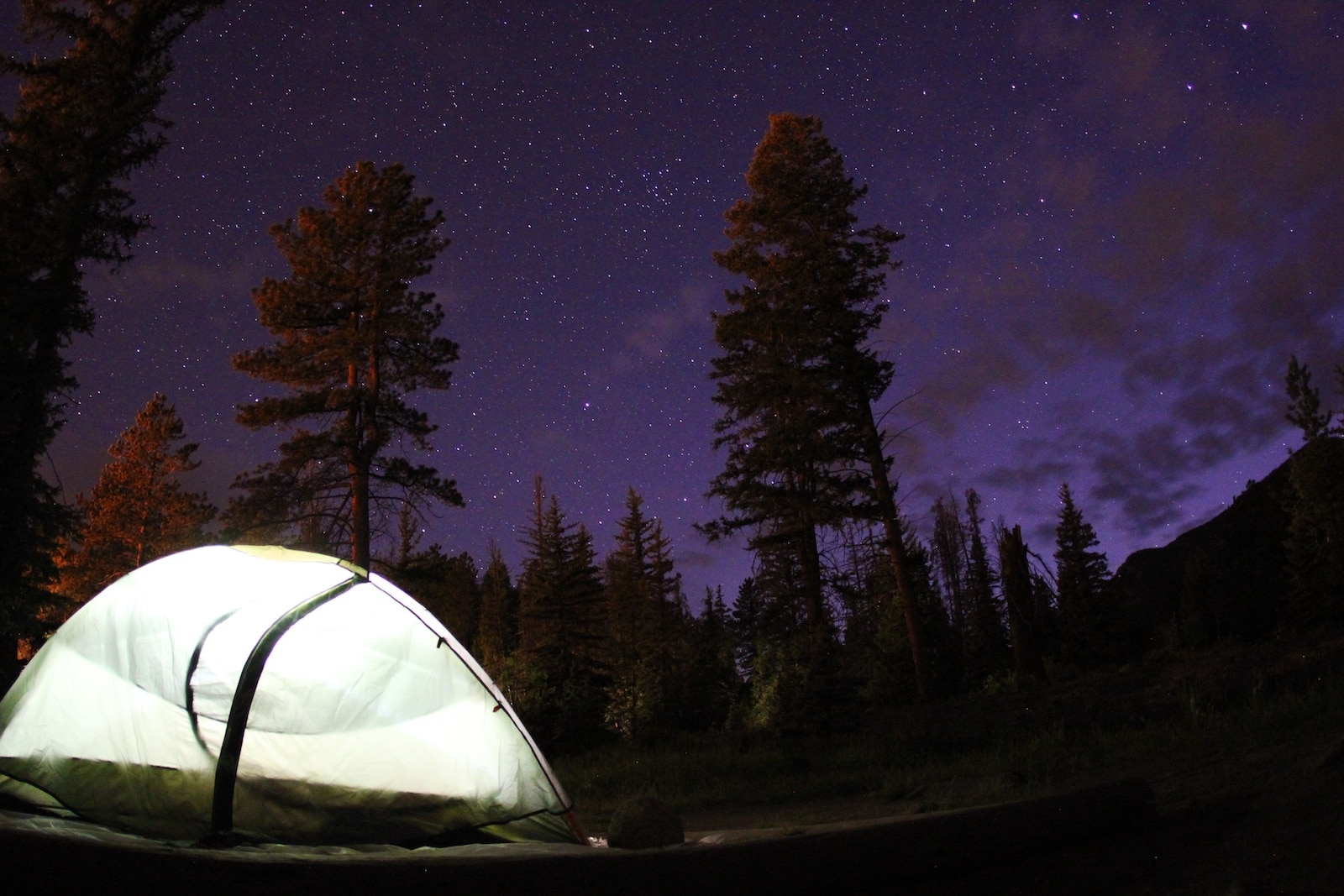 Camping under the nights at RMNP’s Aspenglen Campground. Photo by: daveynin
Camping under the nights at RMNP’s Aspenglen Campground. Photo by: daveynin
Spread out around the state, Colorado is home to five separate parks that have been recognized by the International Dark-Sky Association as an IDSP, all of which are open to the public to visit year-round.
Separate from its growing number of Dark-Sky Parks, the International Dark-Sky Association also maintains a list of International Dark Sky Communities to recognize towns, cities, and other places that remain dedicated to the education and preservation of clear night skies. At the end of 2021, Colorado is home to an impressive 6 of the 33 International Dark Sky Communities, making it one of the best states for small-town stargazing.
With great areas to stargaze tucked away in nearly every part of the state, let’s take a look at some of the best places to enjoy the night’s sky in Colorado.
Front Range of the Rocky Mountains
Just beyond the bright lights of the I-25 corridor, the Front Range of the Rocky Mountains is filled with great stargazing spots not far from Colorado’s most populous cities.
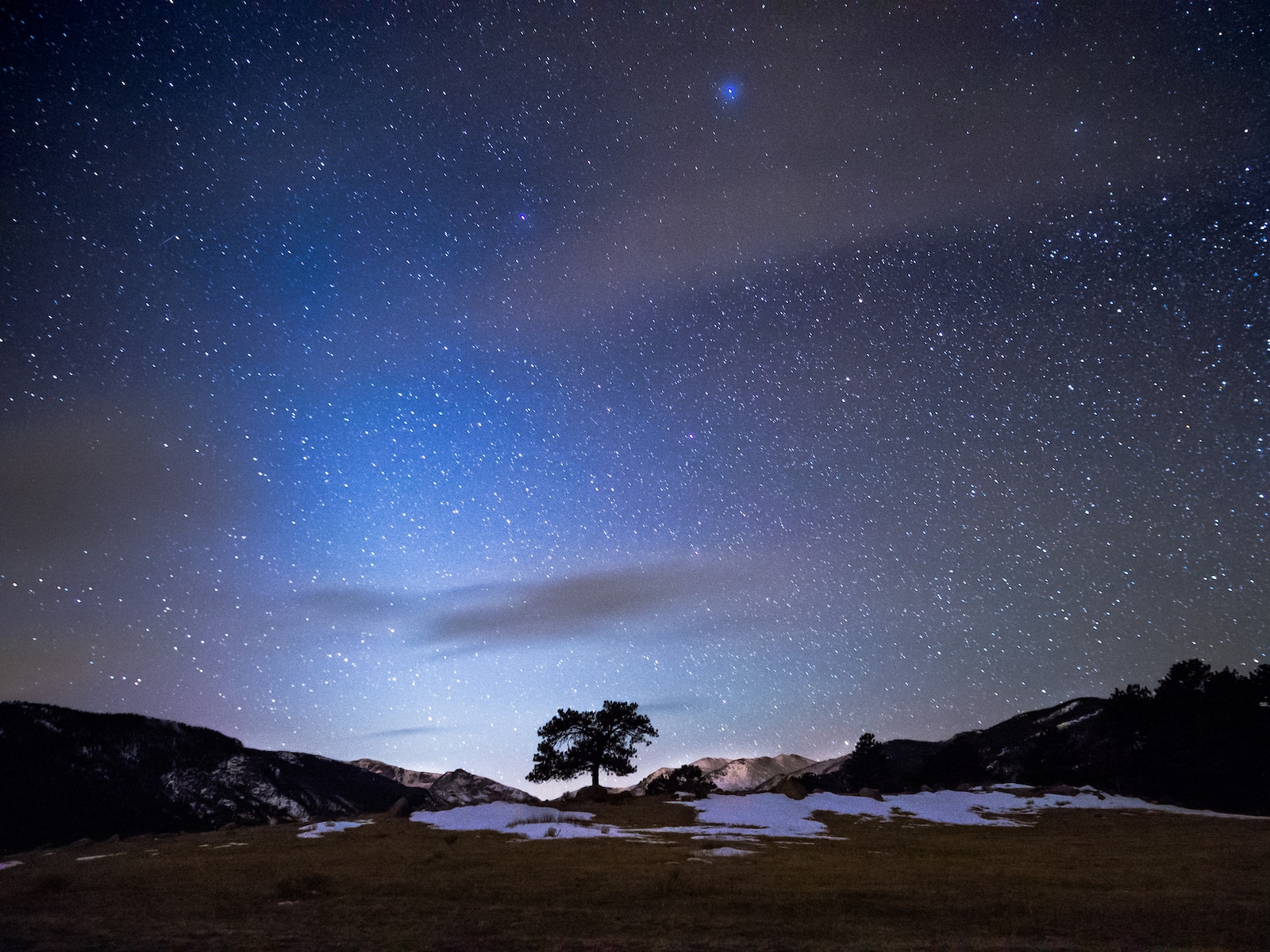 Zodiacal Light in Moraine Park, RMNP. Photo by: Bryce Bradford
Zodiacal Light in Moraine Park, RMNP. Photo by: Bryce Bradford
Mt. Evans
As the highest paved road in North America, the Mt. Evans Scenic Byway offers visitors the chance to drive almost all of the way into space, just 60 miles west of Denver. Full of scenic pullouts and chances to spot wildlife, we recommend driving to the top of Mount Evans before sunset to safely navigate the steep and winding road.
Near the top, visitors will find the Meyer-Womble Observatory, a solar-powered building owned by the University of Denver that was once the highest observatory in the world at 14,148 feet elevation. Although the facility is no longer open to the public, the summit is still an unbelievable place for panoramic, mountain-top stargazing.
Rocky Mountain National Park
Between Estes Park and Grand Lake, Colorado, the 250,000-acre Rocky Mountain National Park (RMNP) draws millions of visitors each and every year, with public access open 24/7/365. We recommend planning a visit “after-hours” for a truly beautiful stargazing experience.
As the highest elevation visitor center in the National Park System, the parking lot outside of the Alpine Visitor Center on Trail Ridge Road is a perfect stargazing spot in RMNP. Of course, for the adventurous, a look at the stars is also a perfect way to enjoy your time in any of the area’s front-country or backcountry campsites.
Red Feather Lakes
North of Rocky Mountain National Park and the Cache la Poudre Scenic Byway, the village of Red Feather Lakes is a great overnight destination for stargazing in the Front Range. With plenty of hotels, campgrounds, and services and a population of less than 400, Red Feather Lakes has everything you need to plan the perfect stargazing trip, without the crowds or light pollution.
For the best overall experience, we recommend stargazing near the shores of one of the area’s public lakes to witness the magic of the night sky’s reflection on the surface of the water.
Florissant Fossil Beds National Monument
In Teller County, Florissant Fossil Beds National Monument is a remote park that is terrific for stargazing one hour west of Colorado Springs. Onsite, the National Park Service recommends the parking lot of the Hornbek Homestead as the best spot for unobstructed views of the sky. At the Visitors Center, the national monument also offers monthly Night Sky Programs in partnership with the Colorado Springs Astronomical Society.
Southern Colorado and the San Luis Valley
With dramatic terrain, clear skies, spiritual communities, and a history of the paranormal, there is no place quite like the San Luis Valley for anything above the clouds in Colorado. The Sangre de Cristo Mountains run along its eastern side, creating an eerie and impressive snowcapped range. On the opposite side of the Sangre de Cristos, also in Southern Colorado, are a couple of dark sky communities worth checking out.
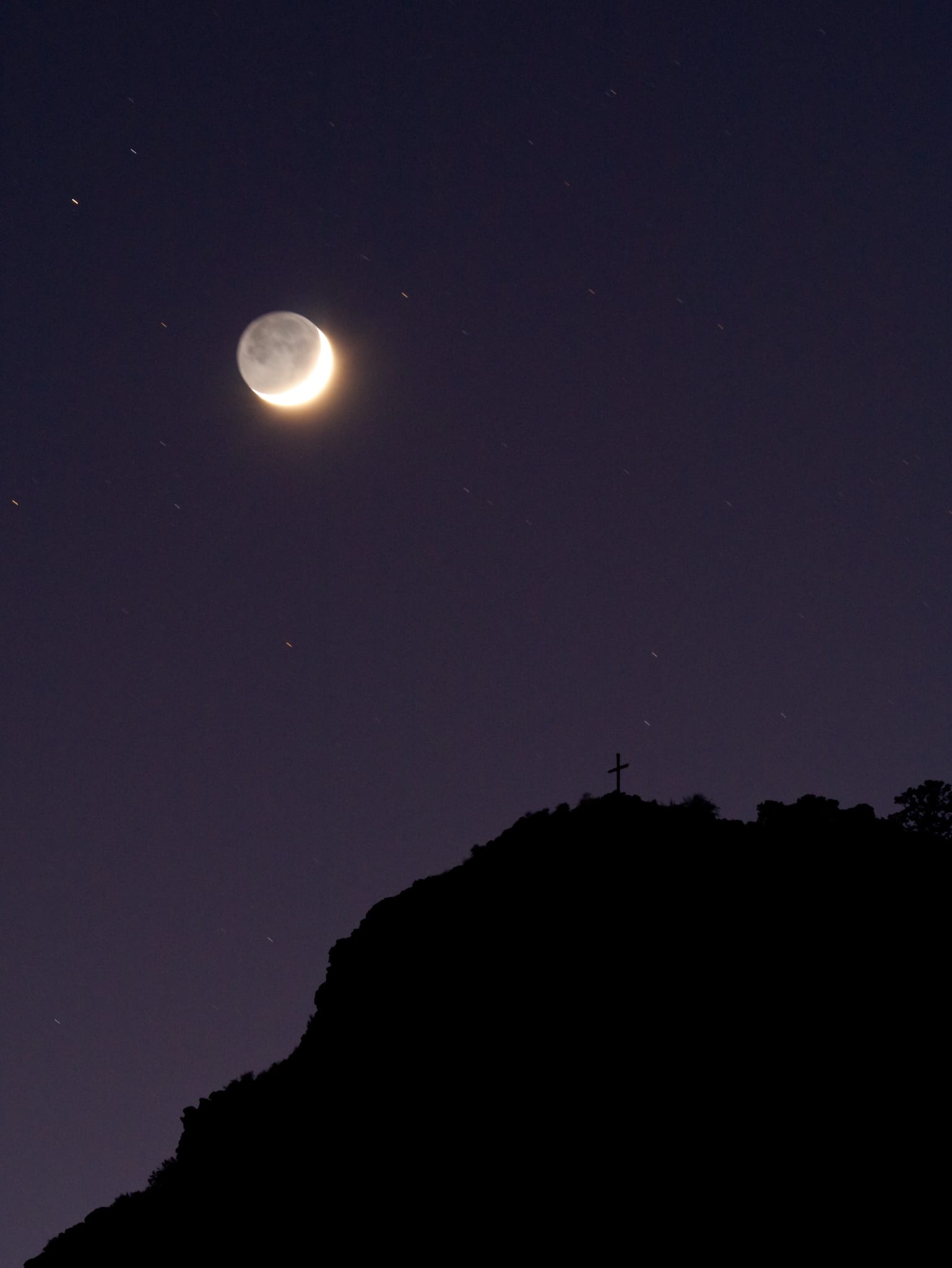 Moon and cross over San Luis Valley. Photo: Michael Rael
Moon and cross over San Luis Valley. Photo: Michael Rael
Westcliffe and Silver Cliff
Designated together in 2015, the Custer County towns of Westcliffe and Silver Cliff, Colorado were the first communities in the state to be recognized by the International Dark-Sky Association. Ideal for stargazing as the only two incorporated towns in south-central Colorado’s Wet Mountain Valley, the two neighboring spots offer both food and lodging services to complete any astronomy-fueled visit.
For the full Wet Mountain Valley stargazing experience, the Smokey Jack Observatory in Westcliffe is a great place to enjoy a Rocky Mountain sunset followed by crystal clear night skies. The venue includes a telescope onsite and has hosted a wide variety of private and public stargazing events since its development in 2015.
Great Sand Dunes National Park and Preserve
Encompassing 150,000 acres of southern Colorado, The Great Sand Dunes National Park and Preserve was designated as an International Dark Sky Park in 2019. Nestled into the mystic San Luis Valley, the clear skies of Great Sand Dunes make it a prime location for stargazing while surrounded by an one-of-a-kind landscape.
Knowing that “half the park is after dark,” Great Sand Dunes visitors are highly encouraged to view the stars from atop the country’s tallest sand dunes throughout the night for a completely surreal experience. Best of all, during a full moon, there is no need for a flashlight to navigate the dunes and visitors may even be able to spot the park’s coyotes, toads, salamanders, and other nocturnal creatures throughout a summer evening.
Crestone
Nestled into the Sangre de Cristo Mountains, Crestone is a notoriously spiritual town that became an International Dark Sky Community in 2021. Despite only having a population of about 150 residents, Crestone is home to over two dozen spiritual centers, retreats, and sacred landmarks to incorporate the bright night sky into any sort of enlightening experience.
To feel the true energy of Crestone, we recommend booking an overnight visit in town and enjoying the stars from the comfort of your accommodation. If you’re just passing through the area, there may also be a potentially great stargazing experience waiting for you atop the Crestone Ziggurat, south of town.
UFO Watchtower
Just down the hill from Crestone and Great Sand Dunes National Park, the UFO Watchtower in Hooper offers an out-of-this-world stargazing experience for a small overnight camping fee. After enjoying the roadside attraction’s unique sculpture garden, visitors are welcome to climb to the top of the 10-foot panoramic viewing platform to look for stars, constellations, and perhaps even a UFO/UAP, or two.
Western Colorado
Generally, the further you get from the front range, you’re more than likely to be very close to some amazing stargazing. Over the Great Continental Divide and into the Western Slope, Colorado’s sparsely populated western regions offer many nice spots for looking up in the clear, dark skies.
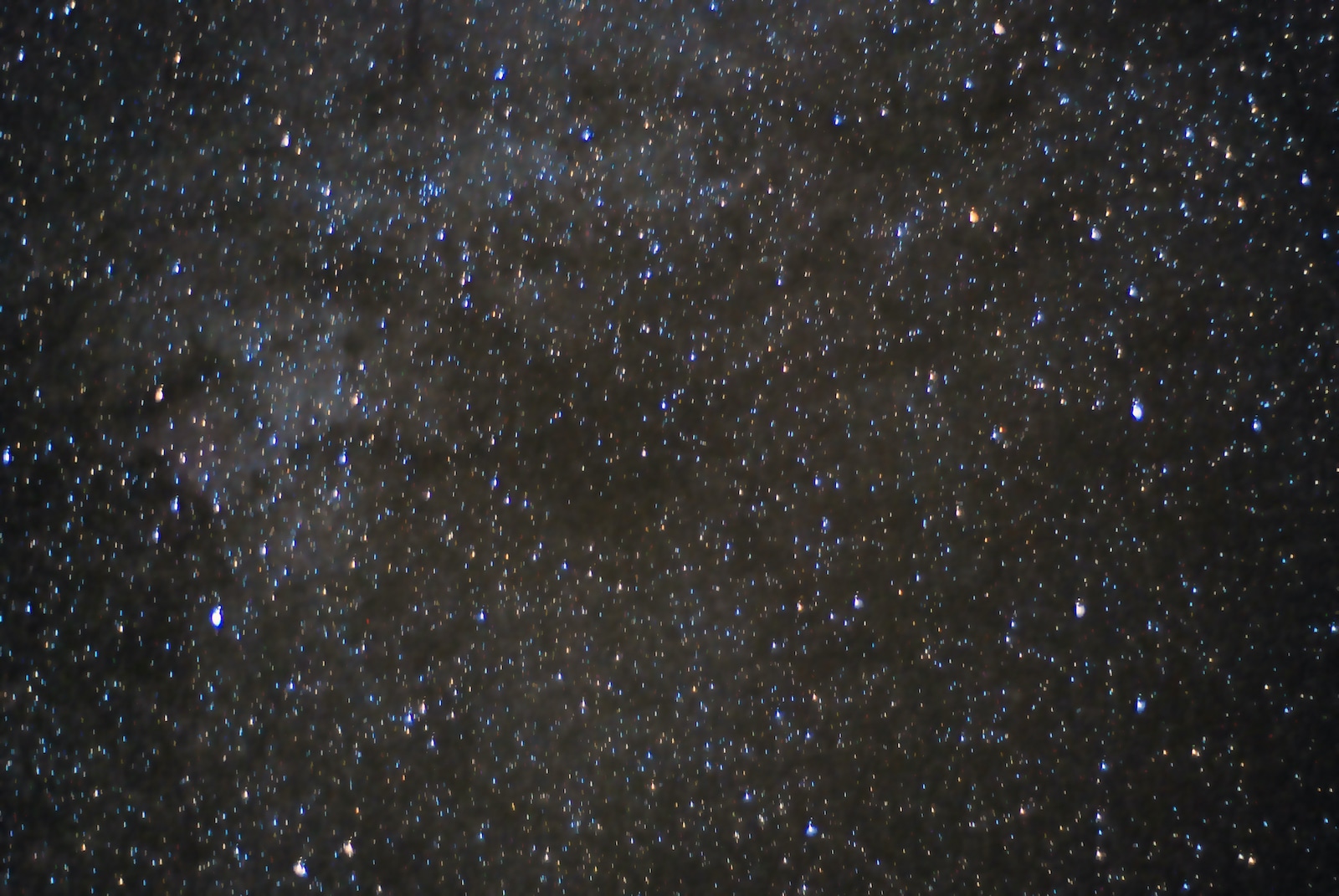 Night sky above Mesa Verde. Photo by: Michael McDonough
Night sky above Mesa Verde. Photo by: Michael McDonough
Dinosaur National Monument
In northwest Colorado on the border of Utah, Dinosaur National Monument was recognized as an official Dark Sky Park by the International Dark Sky Park Association in 2019. Alongside some of the best-preserved dinosaur fossils in the world, a stargazing trip to Dinosaur National Monument can feel like stepping back into prehistoric times.
Home to the Green River, Yampa River, and acres of rugged terrain, stargazing is the perfect complement to any camping or floating trip in Dinosaur National Monument. At the visitor’s center, the park also provides more information about their efforts to continuously reduce light pollution as well as the other interesting features of the area.
Mesa Verde National Park
In southwest Colorado, Mesa Verde National Park is one of the state’s most important heritage sites and earned recognition as the 100th International Dark-Sky Park in 2021. While Mesa Verda National Park remains open 24/7, overnight visitors can stay at the Far View Lodge or the seasonal Morefield Campground for a full, relaxed stargazing experience.
In both the campground and lodge, sporadic ranger-led stargazing programs may be available for interested park visitors. Throughout the mesa’s winding roads, motorists are welcome to park in any of the available pullouts to sit back and enjoy the stars or stop at any of the popular vista areas such as the Mancos Overlook, the Geologic Overlook, or the Montezuma Valley Overlook.
Black Canyon of the Gunnison National Park
Although only officially established in 1999, Black Canyon of the Gunnison National Park became Colorado’s first designated Dark-Sky Park, after being recognized in 2015. Situated in remote Montrose County, Black Canyon of the Gunnison National Park remains open to visitors all night long to enjoy the spectacular night sky. It’s also the state’s least visited for four national parks, so escape the crowds too.
For decades, park rangers, volunteers, and members of the local Black Canyon Astronomical Society (BCAS) have created astronomy programs for the public to enjoy while visiting the park. This includes the Black Canyon Astronomy Festival, which is celebrated annually on the South Rim of the canyon.
Ridgway
In Ouray County north of Telluride, Ridgway, Colorado (sometimes known as the “Gateway to the San Juans”) was designated as the state’s third Dark-Sky Community in 2020. With a population of about 1,000 people, Ridgway is well equipped to welcome visiting astronomers with many services available in and around town.
For a wide-open public place to enjoy the night sky in Ridgway, locals recommend gathering in the Ridgway Athletic Park, which is located south of town, just west of the Uncompahgre River.
Naturita, Nucla, and Norwood
Also in southwestern Colorado, the towns of Naturita, Nucla, and Norwood are each designated International Dark Sky Communities found south of Grand Junction and northwest of Telluride. San Miguel County’s Norwood originally received recognition in 2019, with Montrose County’s Nucla and Naturita designated in 2021. While services are somewhat limited in Nucla, visiting stargazers are welcome to many lodging and food options in Naturita and Norwood.
Great Plains
And while the terms “Rocky Mountain” and “Colorado” are practically synonymous, stargazers should not rule out the eastern third of the state when planning an expedition. There are many great areas to see the Milky Way on the High Plains.
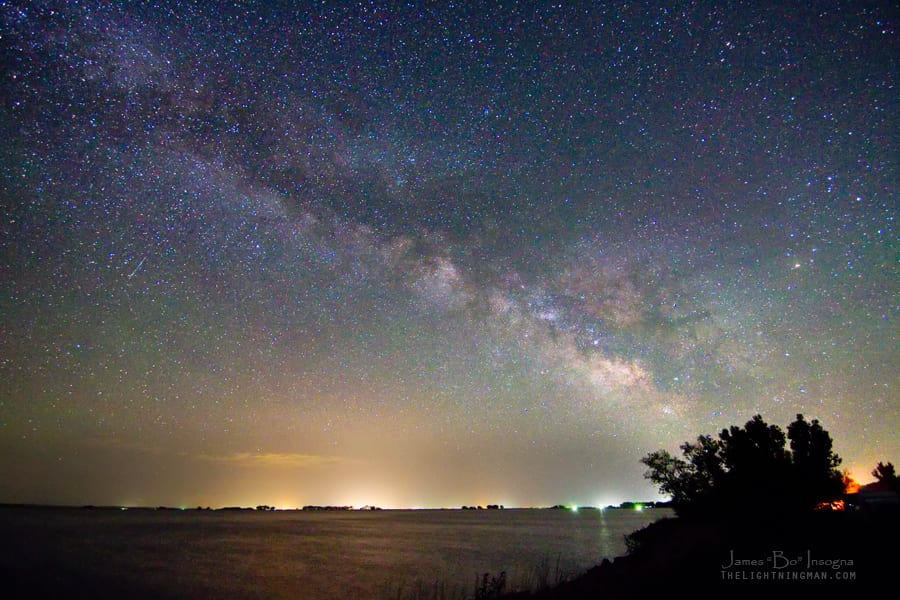 Milky Way over Jackson Lake State Park. Photo by: Bo Insogna
Milky Way over Jackson Lake State Park. Photo by: Bo Insogna
Jackson Lake State Park
Finally, the International Dark-Sky Association recognized Morgan County’s Jackson Lake State Park as an official Dark-Sky Park in 2020. Although it lacks a national designation, locals recognize Jackson Lake as an oasis on the High Plains, with opportunities for boating, swimming, birdwatching, and many other activities to enjoy before the sun goes down.
After removing street lights to become Dark-Sky Park compliant, state park officials helped make Jackson Lake even better for lookers by purchasing an advanced, automated telescope. Free for public use, the telescope makes it easy for visitors to find specific stars and planets throughout the night sky.
Pawnee National Grassland
North of Fort Morgan and east of Fort Collins, Pawnee National Grassland is another great plains area full of vast views and dark skies. Within the nearly 200,000 acres of natural grassland and minimal light pollution, stargazing is one of Pawnee’s most popular activities, next to hiking, primitive camping, and world-class birdwatching.
Comanche National Grassland
In southeast Colorado, the Comanche National Grassland offers the area’s best chance for a peaceful evening of stargazing about an hour and a half east of Trinidad. The large sprawling prairie area encompasses nearly 500,000 acres, with dispersed camping opportunities available near the Picket Wire Corrals Interpretive Sitem and Arch Rock Trail.
Stargazing Opportunities near Denver
Even though Colorado is blessed with an endless amount of remote landscapes and towns perfect for stargazing, nearly half of our state’s residents live near Denver, where the details of the Milky Way are almost always obstructed by local light pollution. Thankfully, there are plenty of stunning spots within a 2-hour drive of Colorado’s capital to find clear skies and vivid constellations.
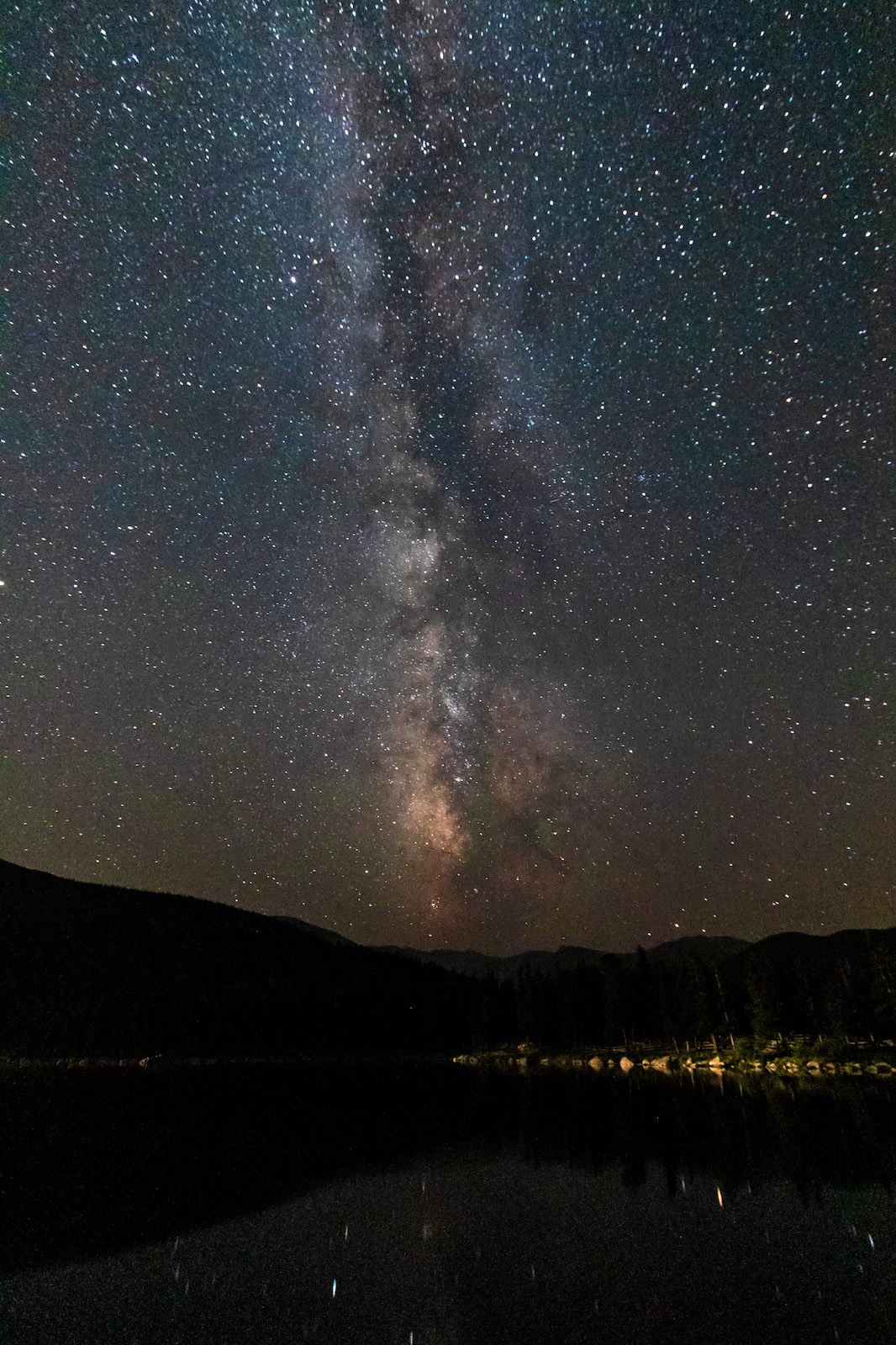 Stars and dust, Clear Creek County, Colo. Photo by: Keith Burton
Stars and dust, Clear Creek County, Colo. Photo by: Keith Burton
While we would gladly recommend remote areas in every park, mountain pass, and national forest within driving distance of Denver as a great place to go stargazing, aspiring astronomers also have access to many great resources within the large metro areas of the Front Range.
With varied hours of operation for public and private stargazing, anyone interested in getting a closer look at the galaxy may be welcome to explore the universe via high-powered telescopes in any of the following locations:
So there you have it – over a dozen parks, communities, and resources to see and learn more about all of the stars in the universe that are visible from the Centennial State. If you’re planning a trip to a remote area, it’s important to remember that every experience is going to be better with proper preparation.
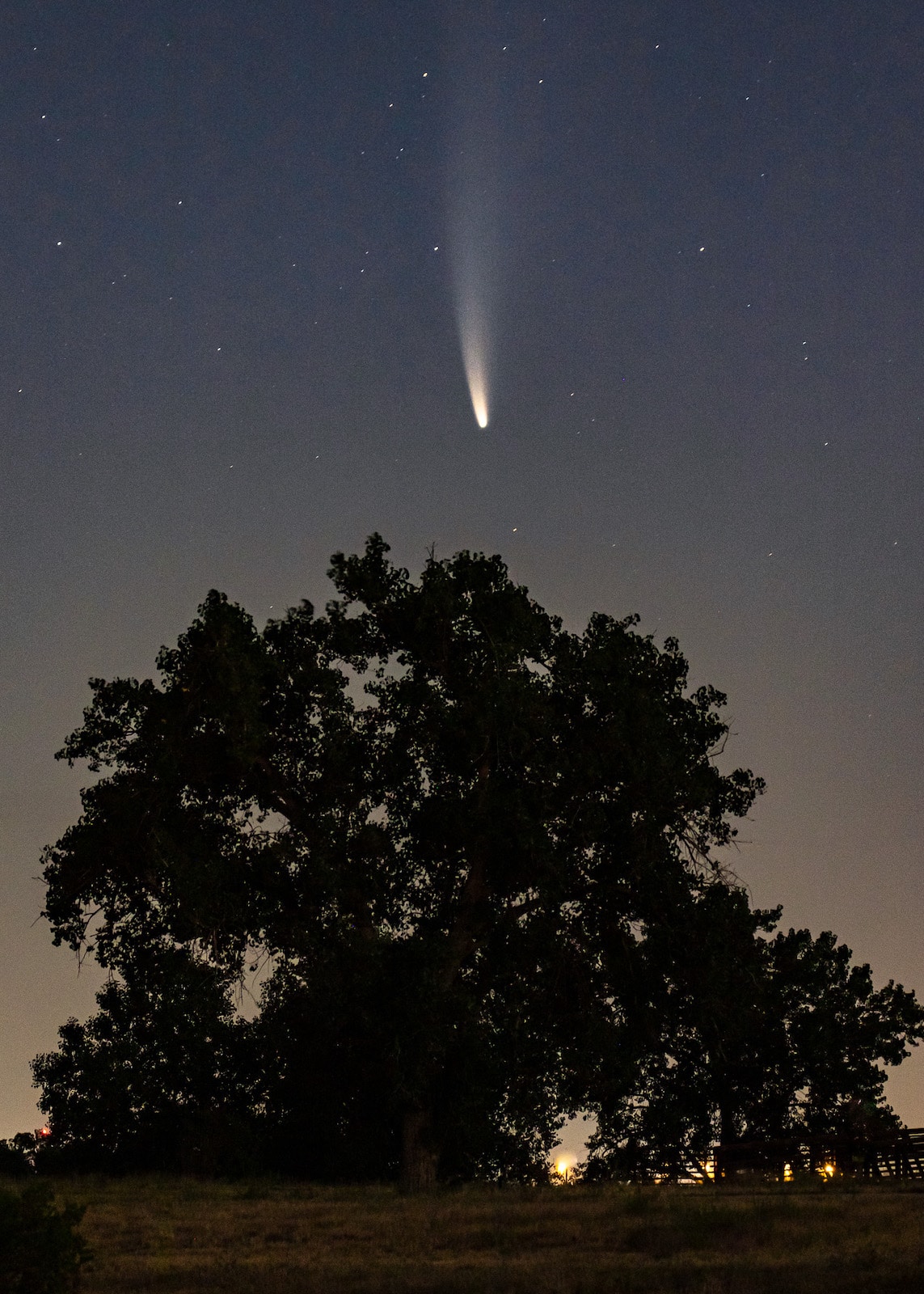 Comet NEOWISE, Henderson, CO, northeast of Denver, 7/11/2020. Photo by: Keith Burton
Comet NEOWISE, Henderson, CO, northeast of Denver, 7/11/2020. Photo by: Keith Burton
For stargazing in Colorado, we recommend bringing flashlights, a sleeping mat or reclining chair, hand warmers, binoculars or a telescope, snacks, and even a star chart if you’d like to sit back and learn more about the night sky. No matter where you go, be sure to use caution, respect the local environment, and always leave no trace. Of course, the stars will always be there, but it’s up to you to go and see them, so happy stargazing!
